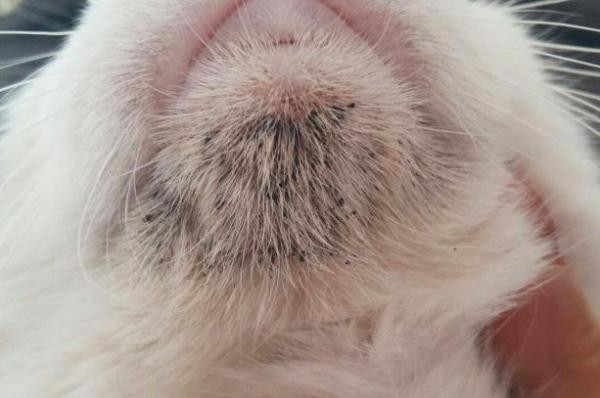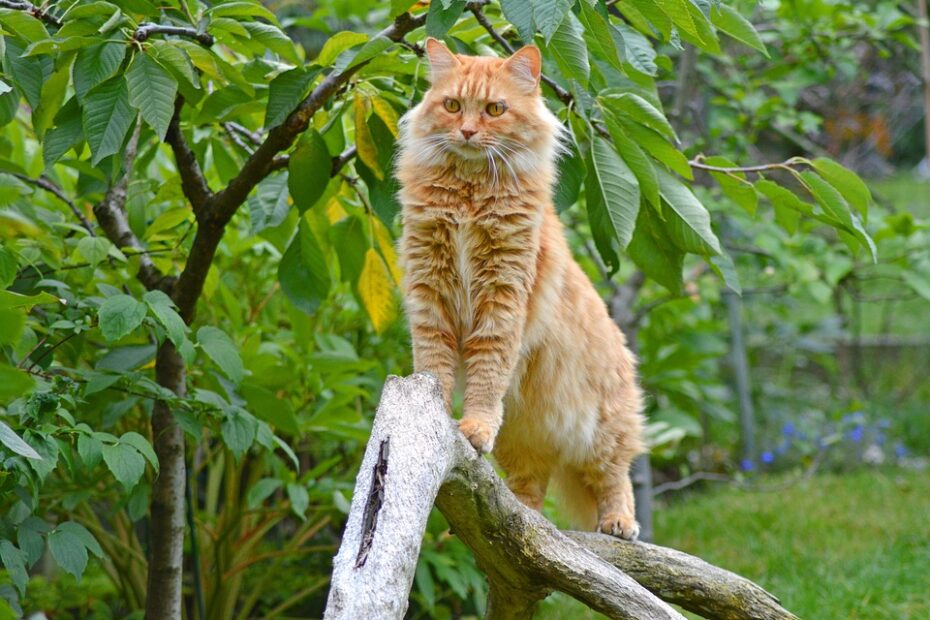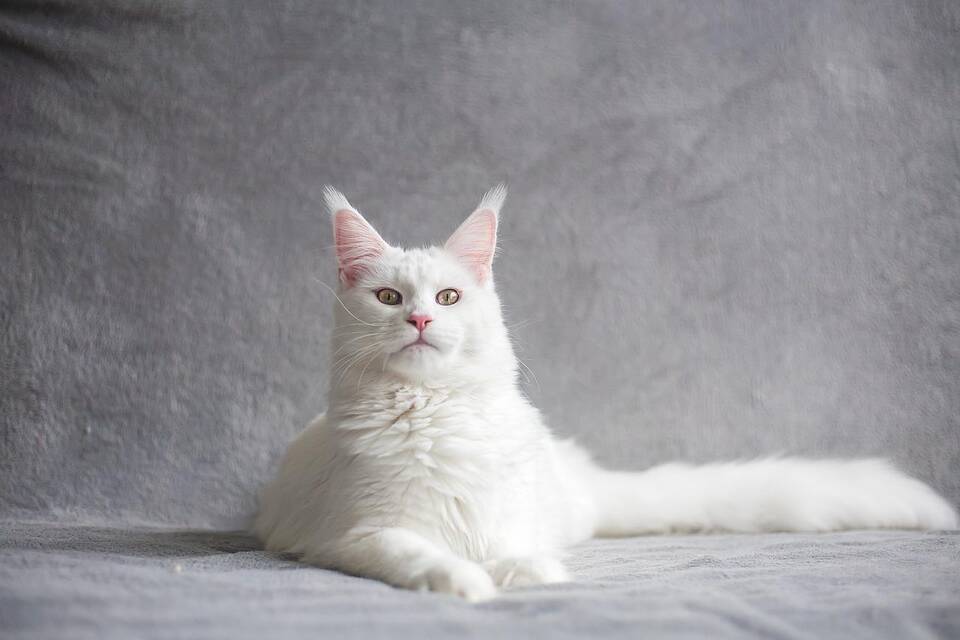Have you ever wondered why your cat sometimes has blackheads on their chin? Turns out, there’s a pretty good reason for it. It’s most likely that your Maine Coon has acne.
Don’t worry, this is a totally normal and harmless condition that is common for a cat to develop. Keep reading to learn more about Maine Coon acne, including the causes, symptoms, and treatment options.
What is Maine Coon Acne?
Maine Coon acne is just cat acne in Maine Coons. The technical term for cat acne is feline acne. It manifests in the form of small red bumps and blackheads, which often appear on the chin of the cat. Simply put it is a skin condition where cat hair follicles produce too much keratin and become blocked. These blockages produce blackheads, pimples, and red bumps. However, there are other causes for the condition.
Causes
There are a variety of possible causes of acne in a Maine Coon cat. The main causes are bacteria, inflammation, and the overproduction of keratin in the hair follicles.
However, acne in a cat is also believed to be linked to other causes such as plastic food bowls, age, allergies, and poor grooming.
Bacteria
It is believed that a cat can develop acne from a different bacterial or fungal infection already present on the cat.
Too Much Keratin
This is one of the main reasons for cat acne. The hair follicles produce too much keratin leading to blockages. These blockages build up and cause blackheads to form.
Plastic Food Bowls
Many don’t know this but a lot of cats are allergic to plastic and coming into contact with their plastic bowl regularly could be a reason acne forms.
This is also said to be the reason acne tends to form on the chin of cats.
Age
An older Maine Coon may be more susceptible to developing acne due to an aged and weaker immune system.
However, regardless of age, acne can develop in all cats young and old.
Allergies
Some of the most common food allergens for a cat include dairy products, beef, chicken, lamb, fish, and wheat.
Maine Coon cats can also suffer from a range of other allergies including fleas, rubber, and dairy.
Make sure to keep a close eye on your cat and watch out for signs of what’s starting the reaction.
Poor Hygiene
Acne could also form on a cat because the cat isn’t cleaning itself adequately. As a cat ages, some tend to groom themselves less which can lead to acne.
You can help them by giving your feline a helping hand. Check out our Maine Coon grooming guide for lots of great tips.
Symptoms
Primary symptoms of cat acne are blackheads, whiteheads, and pimples on the chin, lips, and inside the nostrils.
Secondary Symptoms include excessive licking and biting at affected areas, scabs or crusts on the skin, and redness around the lesions.
If your cat is experiencing any of these symptoms, it’s best to take them to a vet for diagnosis and treatment.

We can also categorize the symptoms as follows:
Dirty Coat
When acne in the form of blackheads begins to form under the cat’s coat it can look like dirt.
It may be very tempting to rub it off but it’s not recommended to. Rubbing the area may cause further inflammation.
Feline Chin
The most common area where acne forms on a cat is on the chin. As mentioned above it may look like dirt at first.
This is another reason people believe that plastic sensitivity may cause a cats chin acne.
When a cat eats from its bowl its chin is rubbing into the plastic bowl a lot.
Blackheads
Exactly like the blackheads on humans, they also form on a cat. They appear as small black, slightly raised lumps. Most commonly under the chin.
Greasy Fur
Because a cat’s skin glands are producing too much oil. It’s quite common for their hair to become oily and feel greasy to the touch.
Treatment
There are a few treatments that can help clear up acne in a cat.
One is to keep the cat’s fur clean and free of oils and dirt, which can help to prevent the formation of acne.
Another is to regularly clean the cat’s face with a gentle cleanser.
If the acne is severe, a vet may prescribe antibiotics or other medications to help clear it up.
We can divide the possible treatments up as follows:
Medication
There are a few ways to treat acne in a cat. One way is to use a topical ointment or cream that your vet can prescribe.
Another way is to give your cat an oral antibiotic.
Your vet can also prescribe a topical or oral acne medication if your cat’s acne is severe.
However, you can try some home remedies first before contacting your vet.
Change Cat Bowls
Instead of using plastic bowls, replace them with stainless steel or glass ones.
Some reports have suggested that a cat may be allergic to ceramic bowls so it’s best to use stainless steel or glass over plastic and ceramic.
Keep Their Bowl Clean
Cleaning your cats and bowl and replacing the water every day is recommended to ensure your Maine Coon has a clean environment to feed in.
Clean The Infected Area
There are a few ways you can treat the infected area yourself from home.
Using a mild antibacterial hand soap with warm water and gently rubbing the area is recommended.
Benzoyl Peroxide pads are often used in humans to clean acne-infected areas and can also be used for cats.
Other good cleaning options include anti-seborrheic shampoo or chlorhexidine.
You can buy these products specially designed for pets.
Warm Compress
A warm compress can be made easily by wrapping a towel and soaking it in warm water. Applying this to the infected area may provide relief to your cat.
Steps to make a warm compress:
- Soak a towel in warm water
- Wrap the towel around the infected area
- Hold the compress against the acne for 5-10 minutes
- Repeat as necessary
Coconut Oil
Coconut Oil is a great remedy for acne in cats.
It’s loaded with fats that soothe the area especially if the area has started to scab and become dry.
CBD Oil
CBD Oil is becoming more and more popular for treating inflammation in people as well as pets.
Rubbing a little on the cat’s infected area can be great to relieve pain and inflammation.
You can also give your cat a little drop directly into their mouth.
We recommend Austin and Kats CBD Oil for cats. The Astaxanthin version is specially designed to promote a healthy inflammatory response.
Keep Your Cat Groomed
If your cat is getting acne from poor grooming habits. Make sure to help them out by doing it yourself.
When the acne has cleared up make sure to keep the chin area well-groomed and clean.
Should I Squeeze Cat Acne?
You should never squeeze cat chin acne.
This could lead to the area becoming infected which could make matter worse down the line.
Instead, apply a warm compress to the infected area as mentioned above.
Is It Contagious?
A cat’s acne is not contagious, it’s primarily due to a cat’s hair follicles producing too much keratin.
However, if the acne is caused by a bacterial infection it may spread to other cats that come into contact with it.
When Should I Go To The Vet?
You should consult your vet as soon as you notice any symptoms such as blackheads, dirty-looking areas of hair under the chin, and small scabs forming.
Conclusion
Acne in a cat can be treated using a variety of methods. If your cat’s acne is severe, your veterinarian may prescribe an oral or topical medication.
However, there are some home remedies that you can try before contacting your vet.
These include cleaning the infected area with antibacterial soap, applying a warm compress to the area, and rubbing coconut oil into the skin.
You should never squeeze your cat’s acne as this could lead to infection.
Consult your vet as soon as you notice any symptoms of acne in order to get proper treatment for your cat.
Elliot is the owner and lead writer at Lais Lairs. He is the proud owner of a Maine Coon/Siberian Mix cat named Lai. His oldest cat lived to be 18 years old so he’s learned a thing or two about keeping pets. When he’s not writing you can find him playing video games or playing fetch with Lai.



